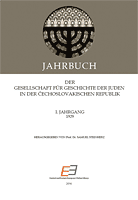
We kindly inform you that, as long as the subject affiliation of our 300.000+ articles is in progress, you might get unsufficient or no results on your third level or second level search. In this case, please broaden your search criteria.


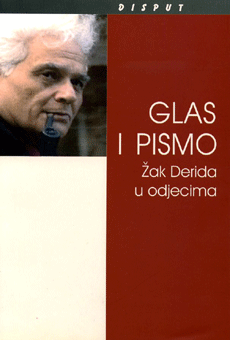
Considering the fact that there are few studies (in Serbian, as well as in Serbian translation) that deal with Derrida’s deconstruction and music, this paper’s goal is to offer the possible angles of thinking deconstruction and music relations. This is achieved through four sketches “entitled”: deconstruction in music; deconstruction of music; deconstruction by music and, finally, deconstruction and music, showing that music has everything to with deconstruction, almost asserting that music is and has always been deconstructive art par excellence.
More...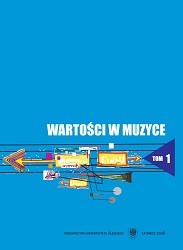
In her considerations, the author of the article proved both in theory and practice (through the students’ plastic works) that the languages of the music and plastic art have a lot in common making the performer closer to a better understanding of art. This skill should be taught to the future pedagogues of the art subjects during their studies. The stydents’ plastic works presented in the article confirmed the hypothesis that beauty and values can be expressed by means of different art languages.
More...
The ubiquitous use of digital technologies has enabled vast possibilities such as instant access to information, presence on any part of the planet, multiplication and transformation of identity, as well as re-articulation and reconstruction of embodiment. Science fiction film and literature, new media art practices, scientific research, and cyber theories often deal with the idea of leaving the body behind and uploading the immortal mind into digital databases where we can be whatever and whoever we want. Compared to modern technology, biological body is often considered obsolete and, as such, it is not “equipped” keep up with the exponential technological development. It is not surprising then that many studies, either scientific or popular, disregard the problem of corporeality and focus more on the issues of identity, consciousness, and disembodiment in digital worlds. Therefore, this book presents the works that focus on the issues of embodiment in the context of new media and their impact on social reality. The starting premise of the discussions is that without a physical body, there is neither virtual nor real. The book points to the importance of the physical body in biotechnological interfaces and the ways the role and functions of the body transform in virtual environments and affect our perceptions and understanding of human ontology
More...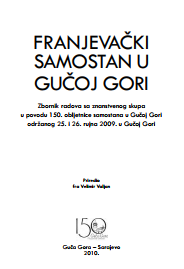
Nakon pada Bosne pod otomansku vlast (1463) razrušeni su, spaljeni i napušteni mnogi samostani u Bosni. Jedan od njih je i Lašvanski samostan, koji se nalazio, prema izvješćima bosanskih apostolskih vikara o pohodima Lašvanskoj župi, na Guvnima, naselju današnje dolačke župe. Ne znamo ni koliko je bilo braće u njemu kad je krajem 15. stoljeća stradao ni kamo su nakon njegova stradanja otišli. U nekim šematizmima provincije Bosne Srebrene piše da su odmah nakon toga prešli u Guču Goru. Makar sjedište vjerskog i franjevačkog života u Gučoj Gori, i to za čitavu Lašvansku dolinu, sezalo tako daleko u povijest, ipak je godina 2009. jubilarna - stopedeseta godina od njegova osnutka i postojanja u pravnom smislu. Sve do tada je ondje bila kuća, kasnije franjevačka rezidencija, u kojoj su boravili franjevci odakle bi odlazili obavljati pastoralnu službu po čitavoj Lašvanskoj dolini, pa i šire. Uz dopuštenje crkvenih vlasti, general Reda Manje Braće, dekretom od 30. svibnja 1859., proglašava samostan u Gučoj Gori. Sagradio ga je biskup fra Marijan Šunjić, rodom iz Bučića, jedan od najobrazovanijih ljudi svoga vremena. Organizatori za obilježavanje stopedesete obljetnice samostana odlučili su tim povodom održati znanstveni skup i izdati malu monografiju o samostanu. Znanstveni skup je održan 25. i 26. rujna 2009. godine, a monografija je ugledala svjetlo dana nekoliko dana prije održavanja znanstvenog skupa. U životu svakog naroda važno mjesto zauzima kulturno-povijesno naslijeđe kao dokaz stvaralaštva i životne snage naših predaka, kao simbol duha i pobjede čovjeka koji je ostavio znakove svoga postojanja. Stara je i mudra izreka koja se pripisuje fra Filipu Lastriću: “Pročitao sam kako je neki ozbiljan povjesničar rekao da je za svakoga čovjeka sramota ako ne pozna kraja u kojem boravi, ako ne zna kako je u njega došao i od kojih je pređa potekao”. A fra Ljubo Hrgić piše u svom Dnevniku: “Dane i noći hodao bih pokraj Lašve i gubio se u šumama. Tražio bih po grobljima starim, tražio bih staru dušu Bosne, drevnu tišinu. Možda je sav mistični čar moje zemlje u njenoj vjekovnoj tišini”. Koliko je Bosna i Hercegovina bila “svoja” svjedoče i samostan i crkva u Gučoj Gori. Ne samo što su ondje bili odgojni zavodi provincije Bosne Srebrene, nego se u njemu nalazila i pučka škola; ne samo što su franjevci Guče Gore vodili važne kulturne i poljoprivredne ustanove već su u njemu omladinska društva nalazila svoje prostorije. Selo Guča Gora nalazi se na 11. kilometru od Travnika i devetom od naselja Doca na Lašvi. Pogled iznad sela penje se prema sivom golom brdu Humu, te Carinama, stijenama koje kao da podupiru jedan plato, borovom šumom obrastao. A dolje, s druge strane prema jugu, vrletna se konfiguracija tla blago spušta prema dolini, praćena njivama, livadama i šumom. Ondje se nalazi prelijepa građevina, kao arhitektonski dragulj, s netaknutom i neunakaženom prirodom s kojom se teško može usporediti koji drugi krajolik. Sam je objekt bio prepušten igri povijesti, čiji su vjetrovi divlje trgali bosanski mir i idilu. Međutim, samostan se uvijek ponovno kao iz pepela dizao i fratri su u njemu započinjali novi život. Tako to traje već 150 godina od njegova proglašenja, a od davne 1706., dakle više od 300 godina, kada se prvi puta spominje, kao sjedište stare Lašvanske župe. Radovi sa simpozija u povodu stopedesete obljetnice postojanja samostana u Gučoj Gori pružaju čitatelju mogućnost upoznavanja s povijesnim zbivanjima, nekad dramatičnim i sudbonosnim, tijekom ne tako lake, ali ipak poštovanja vrijedne prošlosti samostana; također upoznavanja života kako običnih ljudi i istaknutih pojedinaca tako i povijesnih i kulturnih spomenika lašvanskog kraja.. Iznoseći mnoštvo povijesnih podataka i zanimljivih zgoda i nezgoda iz burne prošlosti i iz svakodnevnog života ljudi, autori svojim radovima skidaju prašinu s temelja iz kojih je nikao gučogorski samostan, ali i pročišćavaju izvore na kojima se snagom napajaju ljudi koji vole i samostan i svoj zavičaj. U tim radovima izlaze na vidjelo heroji, znameniti pojedinci, koji su ostali nepokolebivi u vjernosti Bogu, svome narodu i svojoj državi čak i onda kad je to, ljudski gledano, bilo nemoguće; ali izdvajaju i antiheroje, koji su, posebno u otomansko vrijeme, gušili život i rušili sve što drugačije od njih misli, govori i vjeruje. U odabiru autora i radova za jedan simpozij postoji opasnost da ostane po strani nešto što je važno. Radovi sa simpozija su upravo zbog toga poziv čitatelju na traženje i čitanje literature, izvještaja i kronika o svemu što je vezano za gučogorski samostan i njegovu povijest. U tom su smislu poticajne riječi fra Jake Baltića, graditelja samostana i velikog ljetopisca: “Svakomu čoviku, koji iole ima prosvete, milo je čitati i znati povijest svojih starih. Kakvi su naši stari bili? Što se s njima zbilo? Kako su se u događajim vladali? Kad bi se tako što napisano našlo od naših starih, prije šest stotina godina barem, ako ne starije, to bi vridilo prema dragom kamenju. Jer događaje i dila svojih starih pred očima imati, mogo bi se čovik okoristiti u svom življenju. Mudrih je ljudi izreka: ‘Nauči se na primjeru mnogih, što treba nasljedovati, a što izbjegavati’. Neka ti učitelj bude tuđi život’”.
More...
The Croatian country people from Jajce to Bila over the centuries wore the same national costumes, varying only in single tiny details in men and women’s dress. Traditional tunes have been preserved in singing by folklore clubs in this region and are types of older or recent polyphone praxis. Heterogeneousness and creativity are expressed in forming strophe-melodiousness and short and long song-sentence. The poetic text is mostly primary, but often the text is subordinated to the expression of the melody. In the article folk clubs in Lašva’s Valley are described as keeping vivid traditional folk memory: Paklarevo, Napredak Novi Travnik and Vitez, KUD “Žena” from Nova Bila, and the most famous ”Sloga” from Guča Gora, also renowned outside Bosnia and Herzegovina.
More...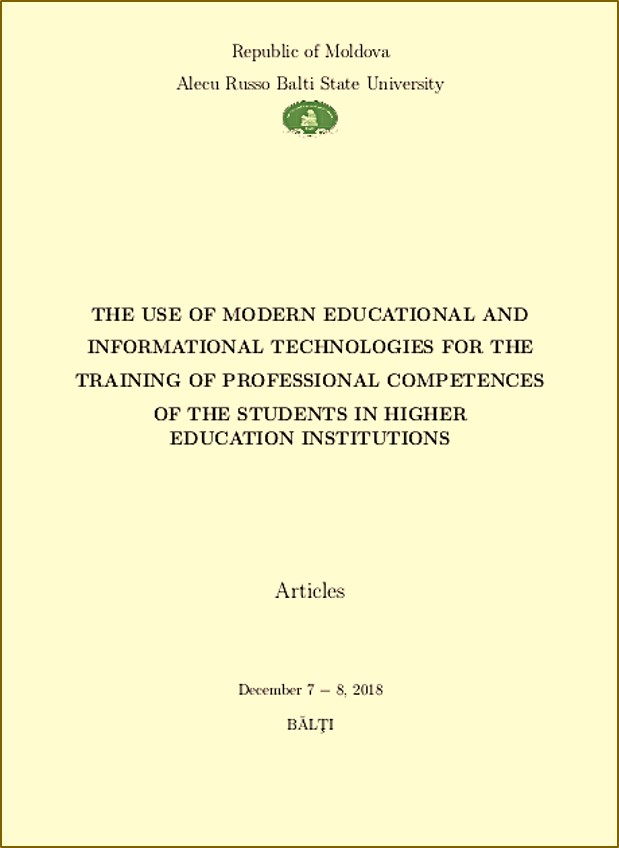
In connection with the transition from traditional education to the usage of new technologies in the context of the modernization of education, the need arose to revise the theory and methodology of professional training of future teachers. The significance of the artistic and creative training of future teachers is explained by the fact that in the condition of the development of vocational education, the modern requirements of society for the future teacher have changed, and the problems of teacher professionalization and individualization, the integration in its training, connecting theories with practice, are actualized.
More...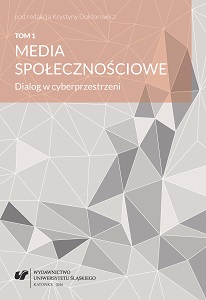
The Internet is at present one of the most important tools of political communication. From the point of view of politicians, it is a perfect tool, not only for economic reasons, but also because the fact that it offers the possibility of permanent communication, which is especially important in the period in-between campaigns. The present article aims to discuss the use of internet sites and social media (Facebook, Twitter, YouTube) by the presidents of cities with county rights from the Silesian Voivodeship. The research conducted indicates the insufficient and inefficient use of the Internet by the politicians subjected to the study. It also demonstrates the intensification of communicative activities on the Internet during election campaigns, and its gradual suppression in the period in-between campaigns.
More...
The aim of the article is to present a reply to a research problem concerning the reasons why a demand for song covers on YouTube measured by the number of hits is higher than the demand for their original versions. The problem has been exemplified by the music piece ‘I will always love you’. The article contains the description of the functioning of YouTube as a music market, its basic subjects, the model of the market, as well as the market mechanism in which a song and its cover are goods. An attempt at solving the research problem is the musical analysis of the original song and its cover, as well as the specification of basic determinants that cause greater demand for song covers than for their original versions.
More...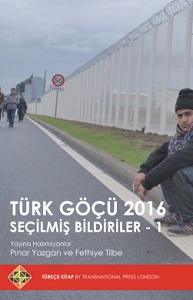
4th Migration Conference was held in Vienna. After a meticulous referee process at the Turkish Migration Conference, a conference program consisting of 72 sessions and 2 workshops was created. 350 oral presentations were made by 400 authors from various countries around the world. Some of the selection papers presented at the 4th Turkish Migration Conference were revised and expanded and published in various national and international magazines and books. In this review, we offer you a selection of the papers presented at the conference. This abstract collection consists of four sections within the framework of the basic areas in the field of migration. The first part includes migration, economy and social policy, migration, identity and diaspora in the second part, Urbanization, Politics and Migration Policies in the third part, and the fourth part of history, art and migration under the heading various works. We hope that these studies will also contribute to the development of turkish migration.
More...
Müzik, çingenelerin hayatında farklı boyutlara sahip bir olgudur. Müzik üzerine olan yetenekleri doğrultusunda sanata bakış açıları değişik şekillerde olmuş ve bu yeteneklerini geçimlerini temin etmek adına çok iyi kullanmışlardır. “Dünyada Çingeneler üzerine araştırma yapan bilim adamlarının genel kanaati dünyadaki hiçbir etnik gurubun, Çingeneler kadar müzik zevki ve kabiliyetinin olmadığı doğrultusundadır. Dünyanın dört bir yanına dağılmış olan Çingeneler, son derece ilginç toplumsal bir mozaik yapı oluşturmaktadırlar. Çingenelerin müziklerini, dansları, gelenek ve göreneklerini çok iyi tanıdıktan sonra; bambaşka bir dünyanın insanları olarak ne kadar insancıl bir yapıda oldukları anlamamak imkânsızdır” (Sal, 2009, s.72).
More...
Göç tecrübesi esnasında insanların gelenek ve kültürel dünyalarından ayrı koyamadıkları şeylerden biri de müzik ve dans pratikleridir. Toplumlar kendi müzik dünyalarını kültürel unsurlarla sıkıca örülmüş bir halde inşa ederler. Bu durumda müziğin toplumsal olanı şekillendiren birçok işlevinin yanı sıra aynı zamanda o topluluğa aidiyeti ifade eden bir “anlatı” oluşturduğu ifade edilebilir. Öyle ki bu anlatı sayesinde insanlar bir araya gelebilir, bir şeyler paylaşabilir ve hayatları boyunca ters giden şeyler karşısında birçok şeye “yeniden” başlayabilirler. Bu anlamda göç kavramının özellikle yersiz yurtsuzluğu, arada kalmışlığı anımsatan anlam dünyasına karşılık müzik insanlar için bir tür ortak bir anlam dünyasının anlatısına dönüşmektedir. Böylece göç ve müzik arasındaki ilişkide özellikle müzik, geleneğin taşınması, dönüştürülmesi ve canlı bir pratik olarak güncellenmesi noktasında temel bir anlam dünyasının üretilmesinde ve pratik hale getirilmesinde kritik bir yerde durmaktadır.
More...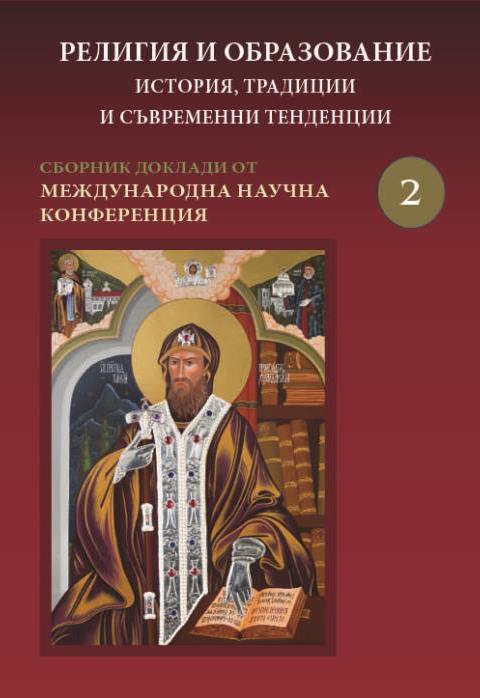
In this text, the attitude of music-religion is subordinated to the idea of integrating the religious themes into the educational process of music history. In a broad interdisciplinary framework, some philosophical-aesthetic, cultural, sociological, psychological aspects of the problem are affected, as deliberately sought distance from purely theological and accent on the general culture.
More...
This paper is dedicated to Petar Dinev's contribution to church music education in Bulgaria. Raised in traditions and Eastern singing, and Western European music, Dinev strives to achieve a synthesis between these two traditions both in his liturgical works and in his pedagogical work. This idea Dinev develops in his pedagogical activity and in his tools the beginning of the introduction of the Bulgarian church music in the academic practice and its establishment in a separate scientific and educational field in the Bulgarian musicology.
More...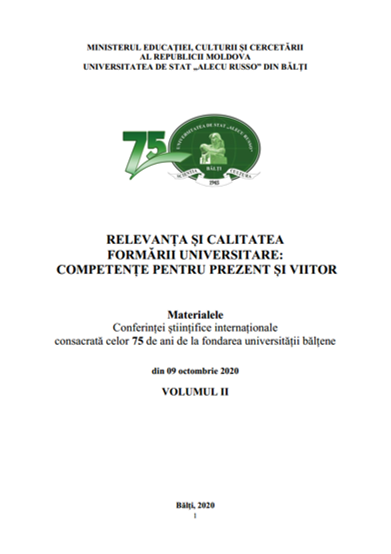
In our research we proceed from the reality that the artistic activity differs much from other human activities through its ontological specifics, which requires taking into account the opportunities and challenges that arise in individual potential manifestation of the child, act that expresses by transposing the theoretical prescriptions into practical actions indisputable by the presence of emotional-affective reactions, by developing projects and logistical maps of action, is not waiting for certain stimuli coming from outside, but by enhancing the artistic intentions and decisions of child – subjects of education. In the process of artistic perception in instructive and formative actions is identified with the educative action itself. The considerable weight rests on the participative state kid to the design, development and evaluation/self-evaluation (through prescription of individual behavioural maps, anticipating practical actions, varying operations, performing the tasks by choosing the optimal variants for solving) and the dynamics of professional competence of teachers to achieve gradually the theoretical design process and practical actuating, by identifying educational content and valuable actions, diagnosing the individual resources, planning, forming hypotheses, sequential and final evaluation
More...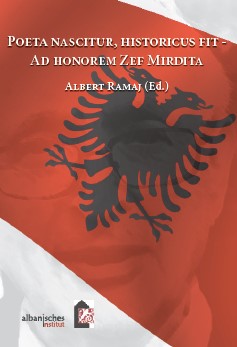
La regione menzionata nel testo di questo celeberrimo canto è, evidentemente, quella del Peloponneso. Ma se si legge attentamente il testo nella sua versione integrale...
More...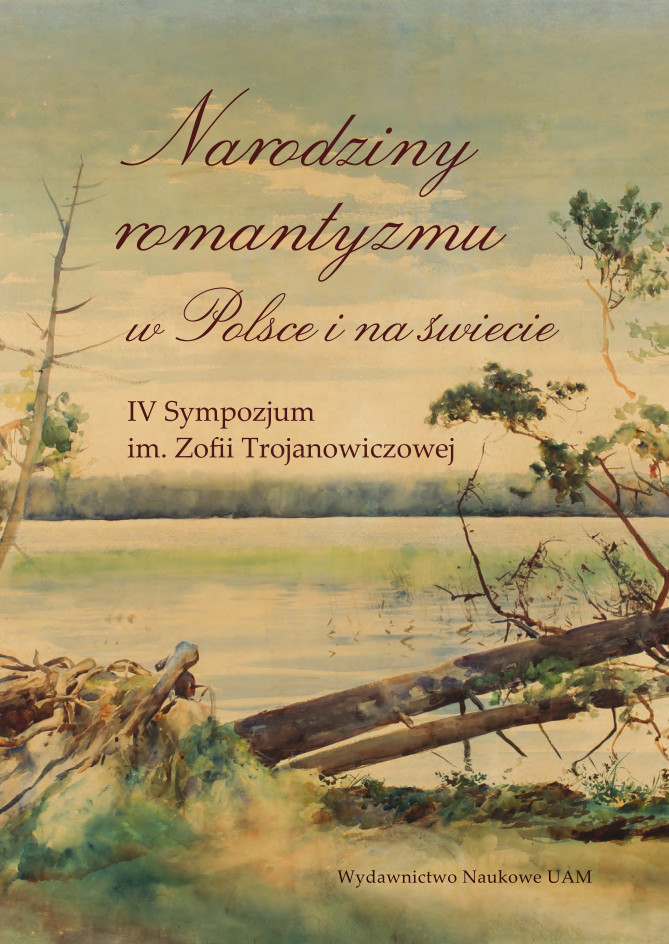
Composed in 1802–1803, Symphony No. 3 in E-flat major is a landmark work not only in Beethoven’s oeuvre but, above all, a landmark in the music of that era. It grew out of the classical tradition, as evidenced by its overall structure and character, but at the same time it effectively transcends that tradition. It represents a structure of breaking out and crossing boundaries in many aspects and elements. The text shows the features and characteristics of Eroica that stand on the side of classical approaches, as well as those that emphasize the romantic dimension of the work. Mostly, attempts have been made to treat both tendencies in a directional rather than a scope-based manner. The approach proposed here seeks to emphasize the original dimensions of the work in the bipolarity of its structure, whose agitation or instability becomes the main property or value of the musical piece.
More...
With the advent of social media and the digital landscape, mainstream activism is a distinguishing feature of young Americans today, referred to as millennials and Generation Z, i.e., those born between 1980 and 2012. However, this perspective overlooks the depth and authenticity of social involvement among these younger individuals, particularly through their embrace of literature and art—particularly spoken word poetry. Spoken word, rooted in oral tradition and championed by previous generations for its social impact, is finding renewed vigor among youth as a genuine means of articulating their societal concerns. This paper will examine the usage of spoken word poetry by contemporary Americans as a means of civic and political engagement. This exploration is contextualized through a modern lens, where digital platforms are amplifying voices traditionally marginalized in mainstream narratives, allowing spoken word poetry to evolve beyond its historical confines into a dynamic form of expression. This study extends the discussion to contemporary poets such as Amanda Gorman, Danez Smith, and Donald Glover who have harnessed the art form to address society’s most pressing issues. This analysis underscores the genre's burgeoning role within popular culture, evidenced by its integration into the music and public personas of artists who have traditionally not been associated with spoken word, thereby marking its reentry into the popular consciousness. At its core, the revival of spoken word among the youth, fueled by social media and digital platforms, represents a recent renovation to an old art form at different levels of pop culture. It is a testament to the enduring power of the spoken word to inspire, challenge, and mobilize. By embracing this tradition, today's generation is not merely participating in an act of revival but is actively redefining civic engagement and artistic expression.
More...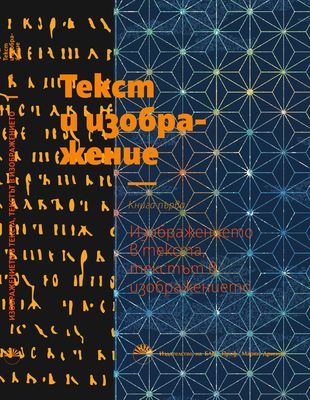
The Crucifixion is a topic in art with many provocations. The article will offer two interpretations of the theme – that of Rico Lebrun in abstract painting, an American artist of Italian origin, and that in the music of Boris Kremenliev, an American composer of Bulgarian origin, who wrote a soundtrack and a piece for orchestra based on Lebrun’s paintings. Through the characteristics of the music, several questions will be addressed: the meaning of the crucifixion in the works of the mentioned authors; the vision of film music in the 1950s; and whether an emigrant nuance in the interest in the plot is possible
More...